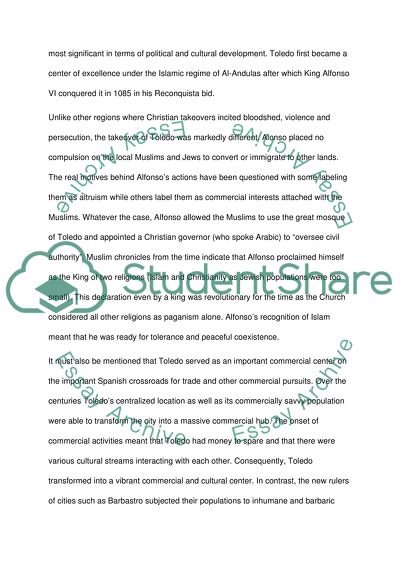Cite this document
(“Toledo - The City of Three Faiths Essay Example | Topics and Well Written Essays - 1000 words”, n.d.)
Toledo - The City of Three Faiths Essay Example | Topics and Well Written Essays - 1000 words. Retrieved from https://studentshare.org/religion-and-theology/1443293-the-city-of-three-faiths
Toledo - The City of Three Faiths Essay Example | Topics and Well Written Essays - 1000 words. Retrieved from https://studentshare.org/religion-and-theology/1443293-the-city-of-three-faiths
(Toledo - The City of Three Faiths Essay Example | Topics and Well Written Essays - 1000 Words)
Toledo - The City of Three Faiths Essay Example | Topics and Well Written Essays - 1000 Words. https://studentshare.org/religion-and-theology/1443293-the-city-of-three-faiths.
Toledo - The City of Three Faiths Essay Example | Topics and Well Written Essays - 1000 Words. https://studentshare.org/religion-and-theology/1443293-the-city-of-three-faiths.
“Toledo - The City of Three Faiths Essay Example | Topics and Well Written Essays - 1000 Words”, n.d. https://studentshare.org/religion-and-theology/1443293-the-city-of-three-faiths.


